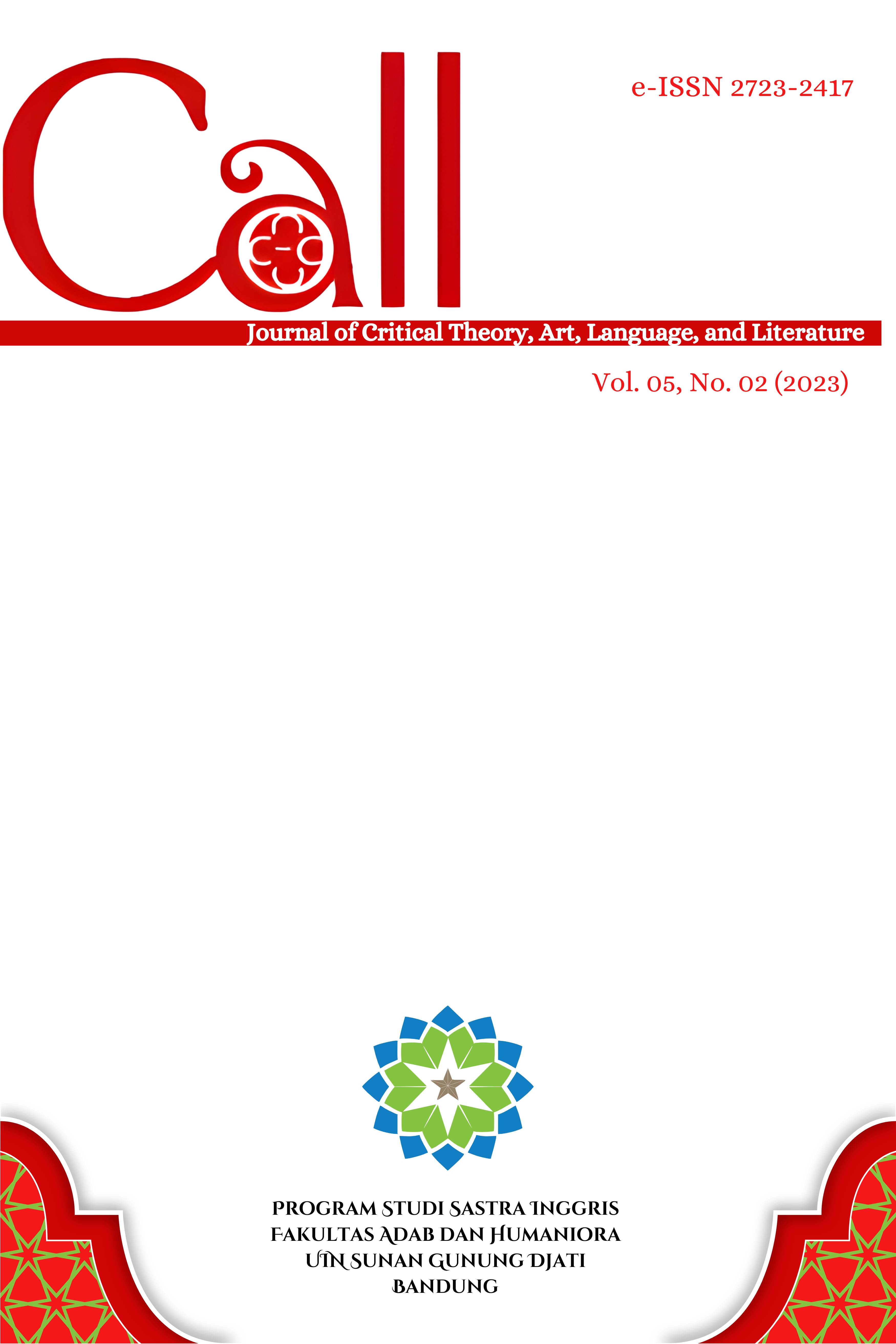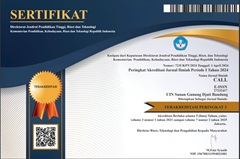COHESIVE DEVICES IN DONALD TRUMP’S FIRST SPEECH AS THE AMERICAN PRESIDENT
DOI:
https://doi.org/10.15575/call.v5i2.21719Abstract
The presence of cohesive devices in speech plays a crucial role in representing the functioning of language. Beyond enhancing the effectiveness of written communication, cohesive devices guide listeners into the realm of context, fostering a shared understanding of meaning. This research focuses on analyzing grammatical and lexical cohesions in Donald Trump's inauguration speech from the 2016 United States presidential election, which took place on January 20th, 2017. The objective of the study is to explore the representation of both grammatical and lexical cohesions. A qualitative method was employed, and data were extracted from pauses in Trump's speech, specifically noting cohesive devices. The findings reveal that grammatical cohesion encompasses references, substitutions, ellipsis, and conjunctions. Lexical cohesions identified include repetition, synonymy, antonymy, hyponymy, meronymy, and collocation. Repetition was observed in 29 pauses, substitutions in 6 pauses, ellipsis in 8 pauses, and conjunctions in 31 pauses. Regarding lexical cohesion, the study identified repetition in 32 pauses, synonymy in 10 pauses, antonymy in 5 pauses, hyponymy in 3 pauses, meronymy in 2 pauses, and collocation in 6 pauses. However, it was noted that incohesive instances occurred in the case of conjunctions, potentially influenced by the situational or contextual factors. In conclusion, this study sheds light on the diverse cohesive devices employed in Trump's inauguration speech, emphasizing the significance of context in understanding language use.Â
Â
Keywords: cohesive device, conjunctions, ellipsis, grammatical cohesion, lexical cohesion, substitutions
References
Afrianto. (2017). Grammatical cohesion in students’ writing: a case at Universitas Teknokrat Indonesia. Leksema: Jurnal Bahasa dan Sastra, 2(2), 97-112.
Aisah, I.W.P., & Putrayasa, I. G. N. K. (2017). Kohesi dan koherensi paragraf pada teks berita Tribun News dalam jaringan (Daring)â€. Humanis. 20 (1), 202–204.
Arifin, J. H. M., & Zaenal, E. (2010). Keutuhan wacana. Jakarta: Grasindo.
Nurfitriani, Bahry, R., & Azwardi. (2018). Analisis kohesi dan koherensi dalam proposal mahasiswa PBSI Tanggal 23 Desember 2014â€. Jurnal Bahasa dan Sastra, 12(1), 39-49.
Chaer, A. (2002). Pengantar semantik bahasa Indonesia. Jakarta: Rineka Cipta.
Creswell, J. W. (2009). Research design qualitative, quantitative, and mixed methods approaches. Los Angeles: Sage Publications, Inc.
Cruse, A. (2004). Meaning and language: an introduction to semantics and pragmatics. Oxford: Oxford Textbooks in Linguistics.
Irianti. L. (2019). The influence of systemic functional linguistics on teaching functional texts in a writing class. English Language Teaching and Research Journal, 3(1), 36-45.
Kridalaksana, H. (2008). Kamus Linguistik. Jakarta: Gramedia.
Loe, E.E.Y. (2017). The Verb “to hurt†in Dengka Dialect of rote language: the study of the natural semantik meta. SASDAYA, Gadjah Mada Journal of Humanities, 1(2), 219-234.
Mufid, L. A., & Simatupang, E. C. M. (2022). Analysis of hyponymy in ‘Oliver Twist’ novel by Charles Dickens (1838): semantics study. Budapest International Research and Critics Institute-Journal, 5(3), 18726-18732.
Muzaqqi. (2016). Semantic approaches in Islamic studies; the review of Toshihiko Izutsu’s thought. Pedagogik; Jurnal Pendidikan, 4(1), 45-53.
Neurath, O., at all. (1955). International Encyclopedia of Unified Science. Chicago, IL: University of Chicago Press.
Putri, M. N., & Fitrawati. (2021). Lexico-semantic analysis of news reports in okezone.com and tribunnews.com about World War III issues. E-Journal of English Language and Literature, 9(3), 360-369.
Rachmi, S., Yassi, A. H, & Sukmawaty. (2023). An analysis of lexical collocation in King Charles’ speech. ELS Journal on Interdisciplinary Studies in Humanities, 6(2), 233-236.
Tarigan, H.G. (1987). Pengajaran wacana. Bandung: Angkasa.
TVEyes; Federal News Service; White House. Top photo by Chang W. Lee/The. (2017). Donald Trump’s Inaugural Speech, Annotated. New York Times
Wahyuni, R., & Oktaviany. (2021). Lexical and grammatical cohesion in the lion king movie script. English Teaching and Linguistics Journal (ETLiJ), 2(1), 133-142.
Wang, T., & Hirst, G. (2012). Exploring patterns in dictionary definitions for synonym extraction. Natural Language Engineering, 18(3), 313-342.
Zakiyah, L., & Zakrimal. (2020). Semantics analysis of hyponym in the “fate and furious 8â€. Linguistic, English Education and Art Journal, 4(1), 45-55.
Downloads
Additional Files
Published
Issue
Section
Citation Check
License
Authors who publish in CALL agree to the following terms:
- Authors retain copyright and grant the journal right of first publication with the work simultaneously licensed under Attribution-ShareAlike 4.0 International (CC BY-SA 4.0) License that allows others to share the work with an acknowledgment of the work's authorship and initial publication in this journal.
- Authors are able to enter into separate, additional contractual arrangements for the non-exclusive distribution of the journal's published version of the work (e.g., post it to an institutional repository or publish it in a book), with an acknowledgment of its initial publication in this journal.
- Authors are permitted and encouraged to post their work online (e.g., in institutional repositories or on their website) prior to and during the submission process, as it can lead to productive exchanges, as well as earlier and greater citation of published work (See The Effect of Open Access).




